Info
Subfamily: Panicoideae
Genus etymology: Digitaria = "having fingers" [Latin] refering to the inflorescence structure
Species etymology: nuda = "naked" [Latin] unclear, perhaps refering to the nodes lacking hairs on some specimens or this grass generally having less hairs than the closely related D. ciliaris
Photosynthetic type: C4 (warm season)
Nativity: naturalized - accidental
First recorded in Hawaiʻi: 1931
Map
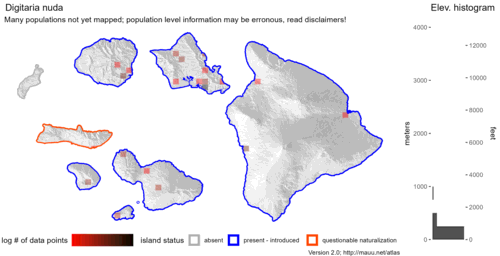

Inflorescence
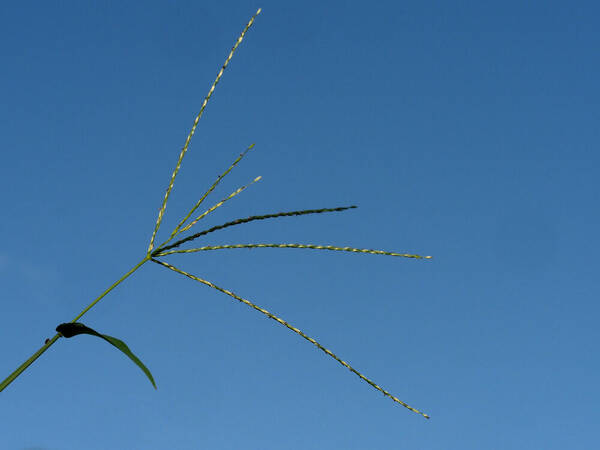
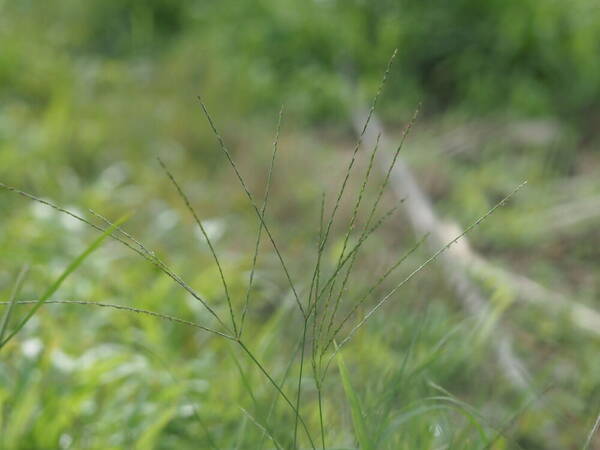
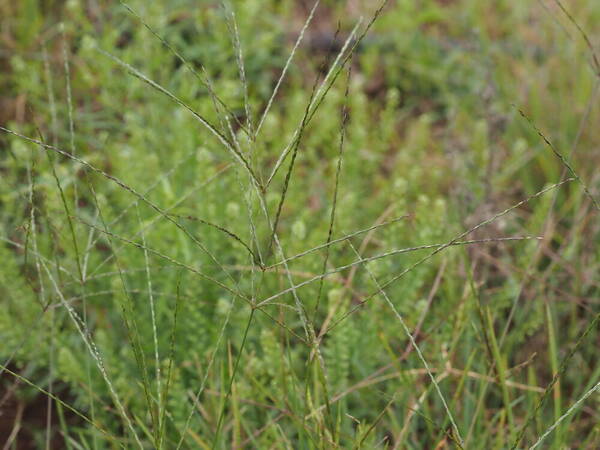
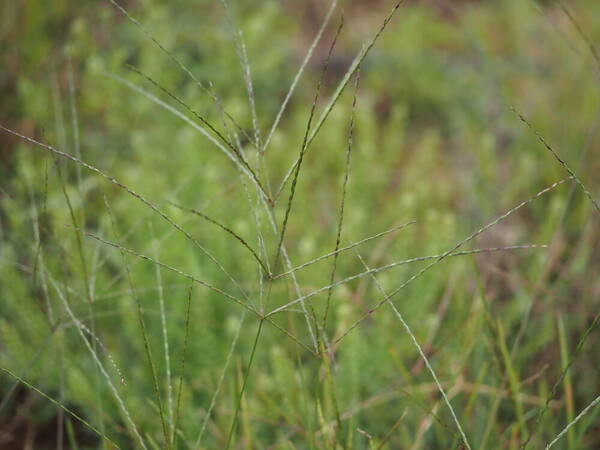
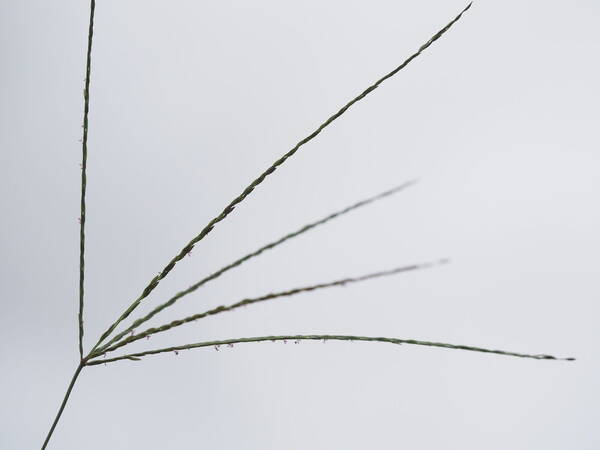
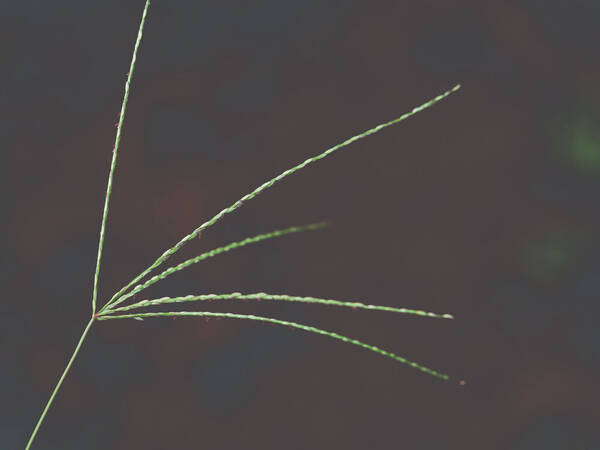
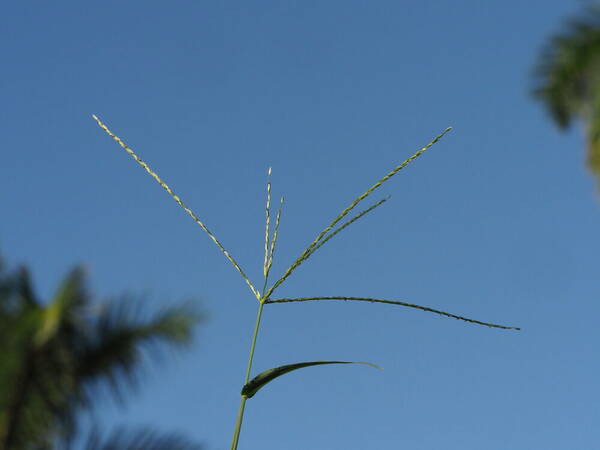
Plant
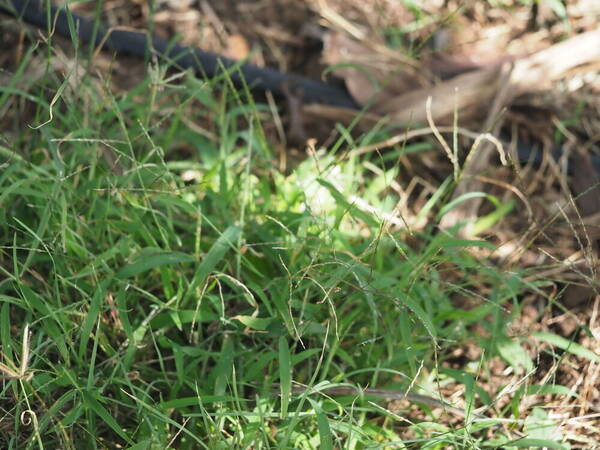
Spikelets

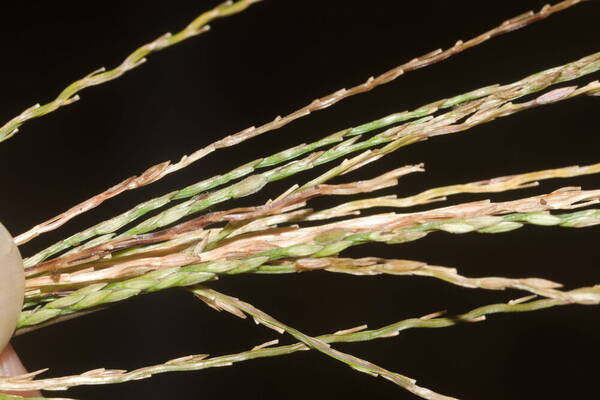
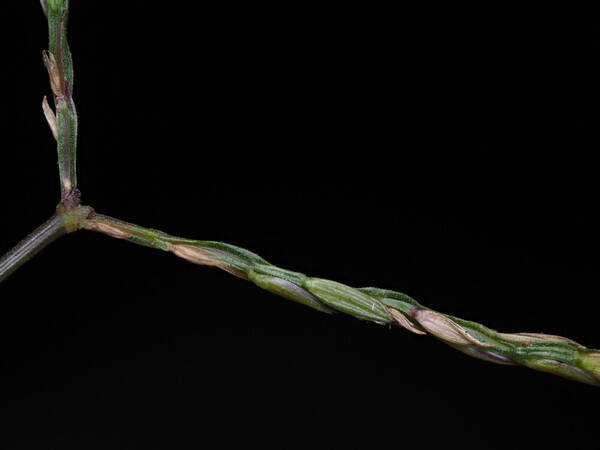
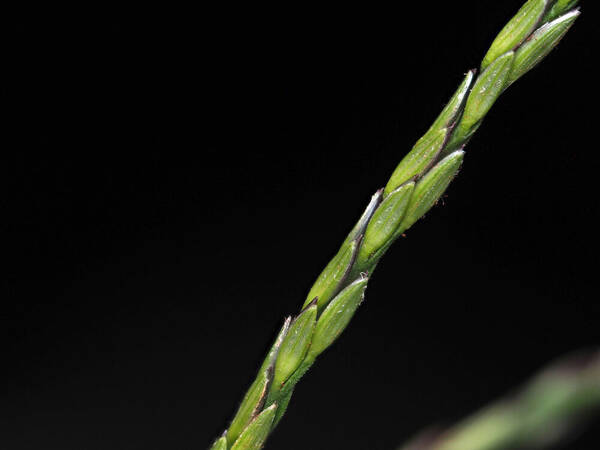
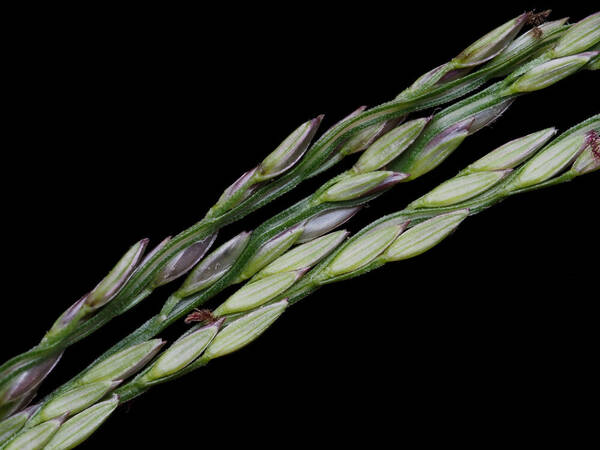
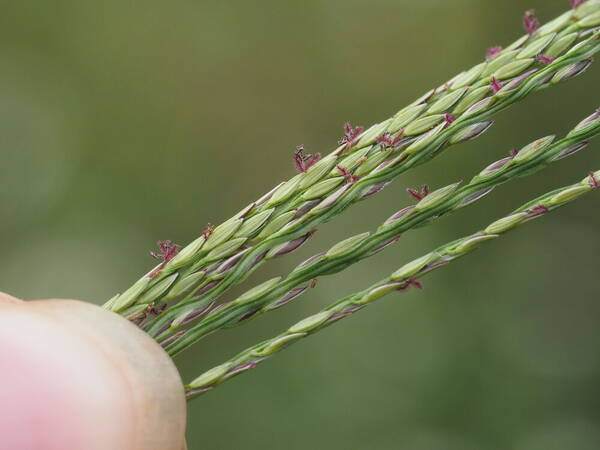
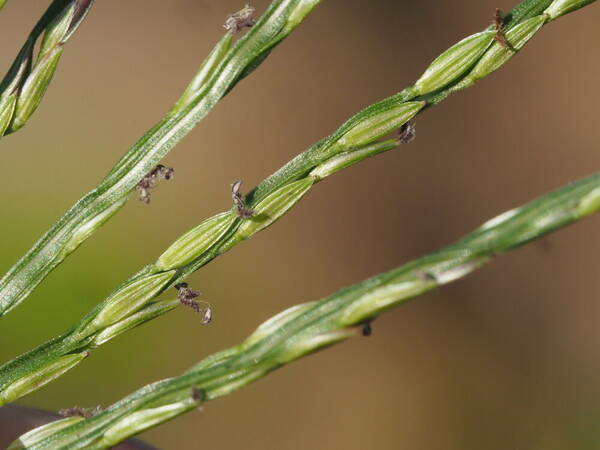
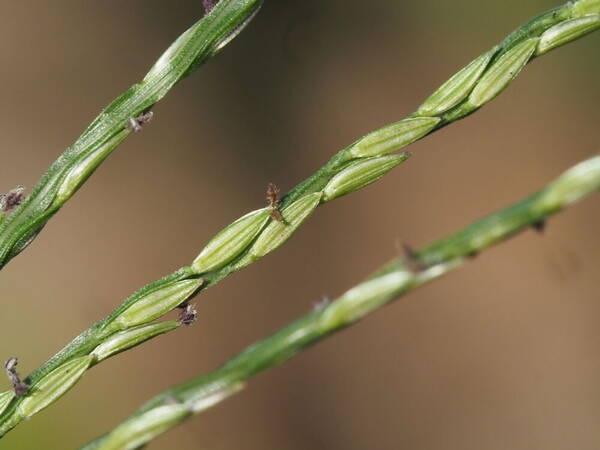
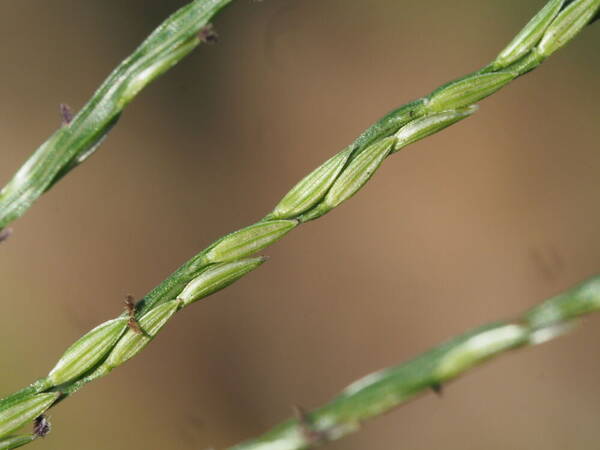
Node
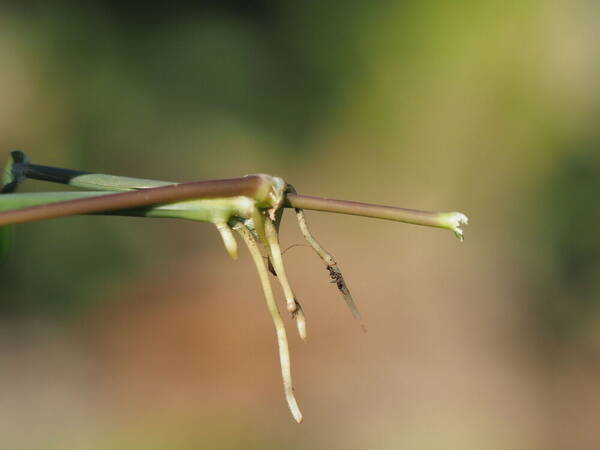
Collar
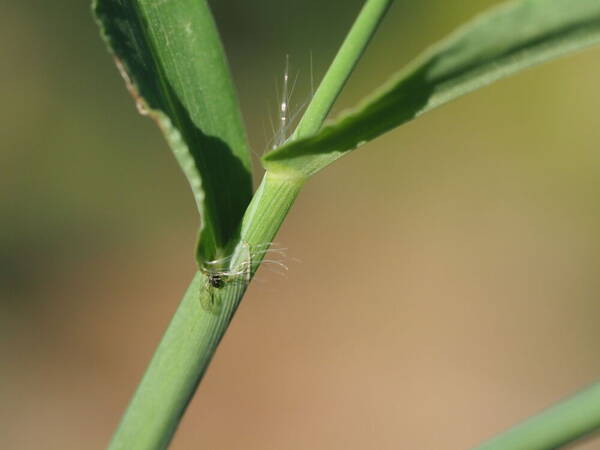
Description
Annual; culms 15–100 cm. high, decumbent at the base and geniculately ascending. Leaf-blades broadly linear, 2–20 cm. long, 3–10 mm. wide. Inflorescence digitate (axis up to 2 cm. long in robust specimens), of 2–20 racemes; racemes slender, straight, 4–20 cm. long, with or without sparse white hairs, the spikelets binate and overlapping by about 2/3 of their length on a winged rhachis with triquetrous midrib. Spikelets narrowly elliptic, 1.7–2.5 mm. long, sharply acute; lower glume wanting or inconspicuous; upper glume 2/3–3/4 as long as the spikelet, 3-nerved; lower lemma as long as the spikelet, 7-nerved, the nerves smooth and evenly spaced (occasionally the pedicelled spikelet with a wide interspace flanking the midnerve), appressed puberulous to silky pubescent, often encompassed by a ciliate frill; fruit ellipsoid, grey to light or greyish brown.
(Description source: Clayton, W.D. & Renvoize, S.A. 1982. Flora of Tropical East Africa. Gramineae (Part 3). A.A. Balkema, Rotterdam. 448 pp. )
A creeping or decumbent, sometimes mat-forming annual. Culms 10–50 cm., glabrous, nodes dark and (sub)glabrous. Leaf sheaths scaberulous, sometimes loosely hairy. Ligule 1–2 mm. long, truncate, erose. Leaf laminae (2)5–12 × 0.3–0.6(0.8) cm., linear, flat, scaberulous on both surfaces, scaberulous along the margin. Inflorescence composed of 2–10 racemes, (3)7–12 cm. long, in one or two superposed whorls of 2–5 racemes each. Rhachis triquetrous, winged, up to 0.7 mm. broad, smooth with scabrous margins. Pedicels 2-nate, 0.5–2 mm. long, triangular, scaberulous, slightly broadened at the apex. Spikelets 2–2.8 mm. long, oblong to lanceolate. Inferior glume shorter than 0.2 mm., poorly developed or even absent. Superior glume 1/2–2/3 of the spikelet, oblong triangular, 3-nerved, appressed hairy, hairs fine, smooth, acute, hyaline. Inferior lemma as long as the spikelet, oblonglanceolate, 5–7-nerved, nerves smooth, mostly (but not always) equidistant, appressed hairy. Superior lemma as long as to slightly shorter than the spikelet, oblong-lanceolate, acute, pale yellow to reddish brown, sometimes bluish grey.
(Description source: Launert, E. & Pope, G.V. (eds.). 1989. Flora Zambesiaca. Volume 10. Part 3. Kew, London. 152 pp. )
Plants annual or of indefinite duration. Culms 20–60 cm, glabrous, decumbent, rooting and branching from the lower nodes, geniculate above. Sheaths glabrous or with long hairs near the base; ligules 0.8–2.5 mm; blades 2–13.5 cm long, 1.5–2.5 mm wide, glabrous on both surfaces or the adaxial surface with a few long hairs near the base. Panicles with 3–8 spikelike primary branches, these digitate or with rachises to 2 cm long; lower panicle nodes with hairs at least 0.4 mm; primary branches 4–15.5(–20) cm long, 0.4–0.8 mm wide, axes wing-margined, wings more than 1/2 as wide as the midribs, proximal portions of the branches often with scattered 1–4 mm hairs, bearing spikelets in unequally pedicellate pairs on the lower and middle portions of the branches; secondary branches absent; pedicels not adnate to the branches. Spikelets homomorphic, 1.7–2.8 mm long, 0.5–0.8 mm wide. Lower glumes absent or to 0.2 mm; upper glumes 1–2.2 mm, 0.4–0.8 times as long as the spikelets; lower lemmas about as long as the spikelets, 7- veined, veins smooth, lateral veins usually equally spaced, sometimes the inner lateral veins more distant from the other 2, intercostal regions adjacent to the midveins glabrous, those between the lateral veins with 0.5–1 mm hairs, hairs initially appressed, sometimes strongly divergent at maturity; upper lemmas yellow to gray when immature, becoming brown at maturity; anthers 0.3–0.6 mm. 2n = unknown
(Description source: Barkworth, M.E., Capels, K.M., Long, S. & Piep, M.B. (eds.) 2003. Flora of North America, north of Mexico. Volume 25. Magnoliophyta: Commelinidae (in part): Poaceae, Part 2. Oxford University Press, New York. 783 pp http://floranorthamerica.org/Digitaria_nuda )